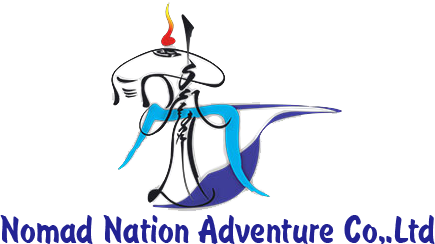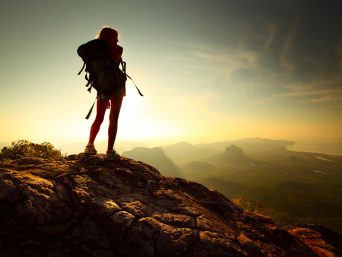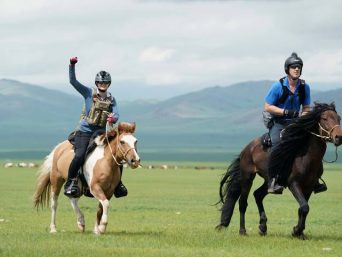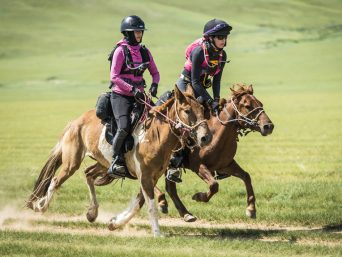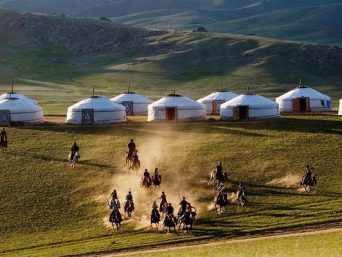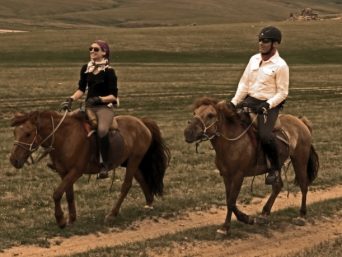Quite possible to modify this program according to your wishes!!!
Day – 1 : Arrive in Ulan Bator city
 Arrival at Ulan Bator and transfer to your hotel for a warm shower and a moment to relax after this long flight (no lunch included).
Arrival at Ulan Bator and transfer to your hotel for a warm shower and a moment to relax after this long flight (no lunch included).
Afternoon, visit of Gandantegchinlin Monastery. Built in 1809, the Gandantegchinlin Monastery – formerly known as the Gandan Monastery – is a Tibetan-style Buddhist monastery located in Ulan Bator. Its name of Tibetan origin can be translated as “Great site full of Joy”.Several hundred monks currently reside there.
It contains a statue of Megjid-Janraiseg (Bodhisattva Avalokiteshvara – called Chenrezig in Tibetan) by 25 meters high.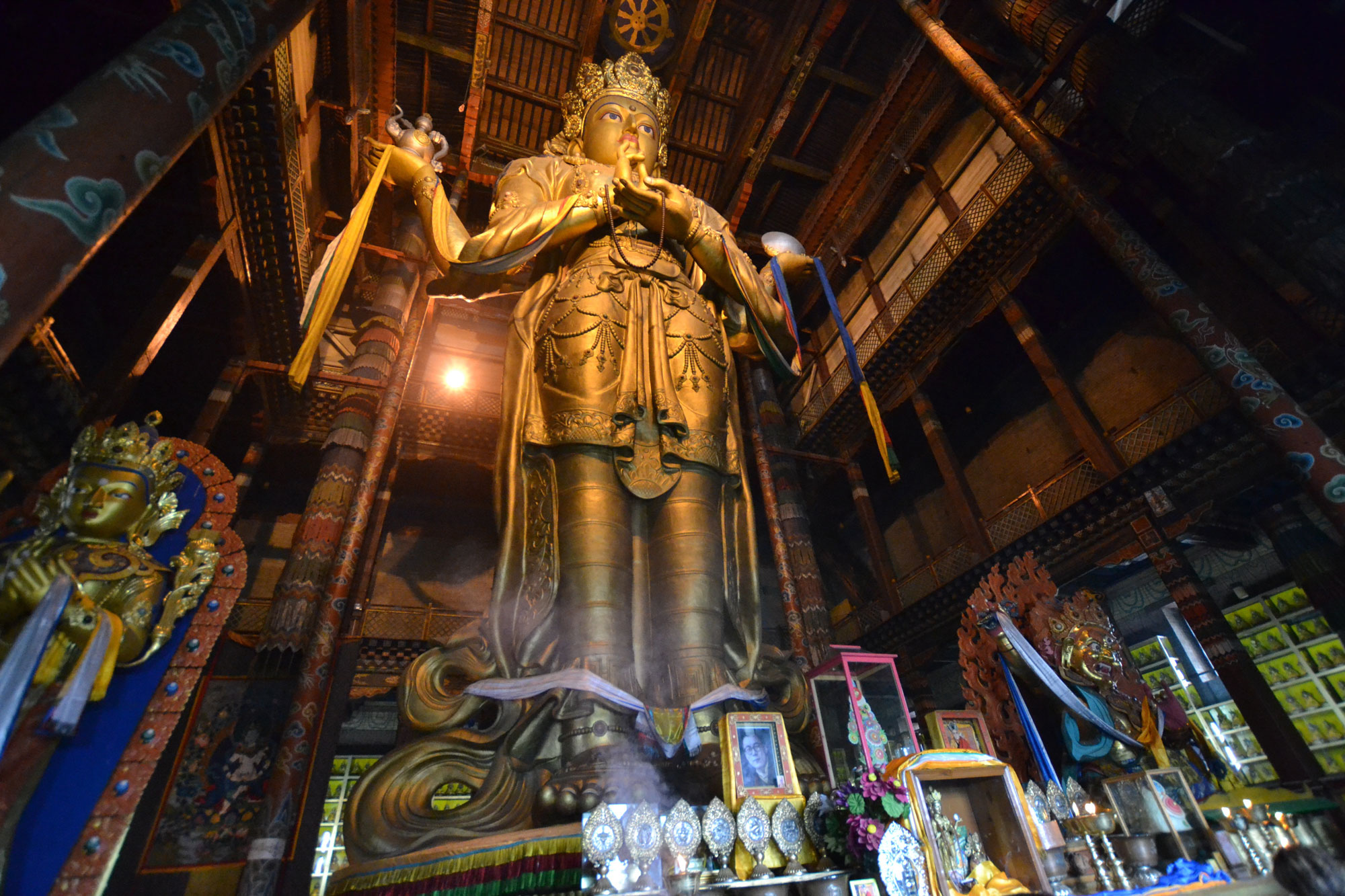
The original statue, made of copper, was erected in 1911 and was dismantled in 1937 by Soviet troops (the remains of the statue were subsequently used to make bullets during the siege of Leningrad). Following the fall of communist regimes, it was rebuilt in 1996 with donations of gold from Nepal and Japan.
Adorned with gold and nearly 2,286 precious stones, the statue weighs over 20 tons and is covered with nearly 100 kg of silk clothing.
Visit of the National Museum of Mongolian History. The National Museum of Mongolian History tells the story of the country, from prehistoric times to today. In this museum there is also an ethnographic section with costumes and jewels from various ethnic groups of countries: Kazakhstan, Buriats, Clzemchins…
Dinner and overnight at the hotel.
Day – 2: Ulan Bator – Horseback Riding in the Orkhon Valley (Karakorum)
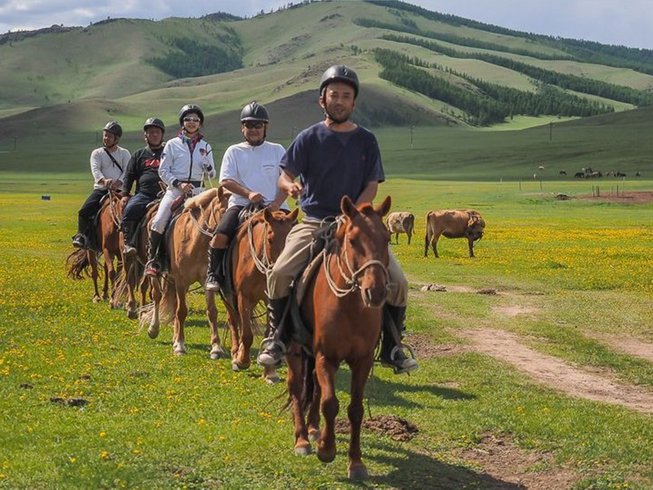 After breakfast, let’s start our trip by Karakorum. Karakorum was the capital of the great emperor Chinggis Khan 13th century.
After breakfast, let’s start our trip by Karakorum. Karakorum was the capital of the great emperor Chinggis Khan 13th century.
The change of environment is striking: after the city, we are now in a mountainous area, a maze of green valleys with wooded slopes.
We meet nomad breeders and horses who will be our companions for the next 9 days.
We install our campsite near Kharkhorin canton
Each rider installs his own tent (tent (Quechua) provided at no extra cost).
A shower tent and a large tent for preparing meals make our camp comfortable.
Dinner and overnight in bivouac
Day – 3: Horseback Riding in the Orkhon Valley (Guezeg Tolgoi) /4 to 6 hours riding each day/
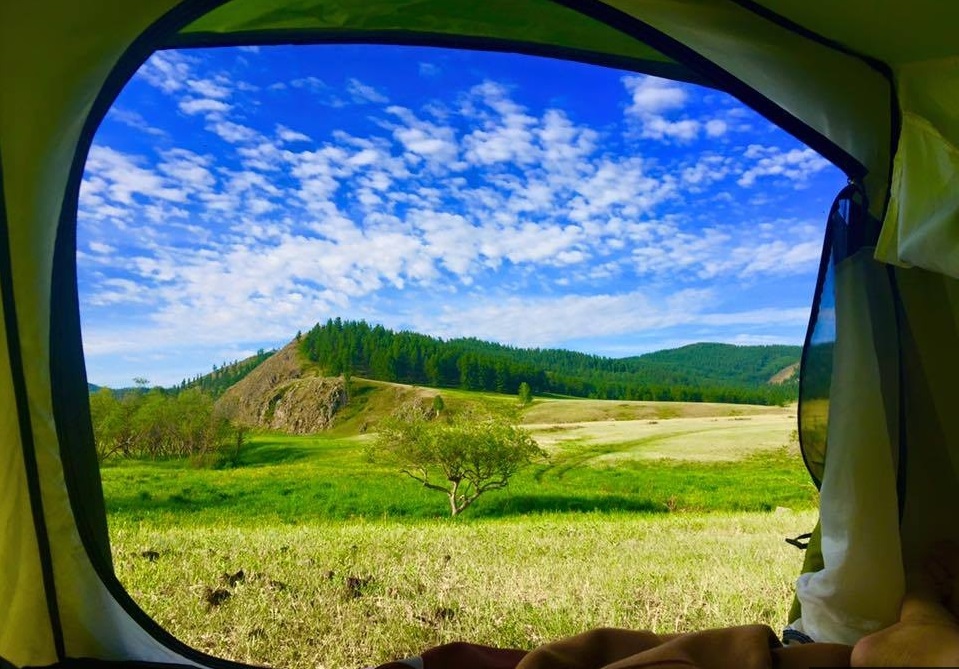 After breakfast; we start our first day on horseback in the mountains bordering the north of the Orkhon Valley.
After breakfast; we start our first day on horseback in the mountains bordering the north of the Orkhon Valley.
Classified in 2004 as a UNESCO World Heritage Site as the cradle of nomadic Mongolia, the “Orkhon Valley Cultural Landscape“, covering an area of approximately 122,000 hectares, covers a vast area of grazing land stretching km long and 30 km wide on both banks of the Orkhon River.
.Grasslands are still used today by nomadic pastoralists in Mongolia, and many families continue the traditional way of life. In the valleys and around the rivers are nestled yurts which shelter nomadic families. In the wild, herds of horses, yaks, sheep and goats move in these protected areas.
The Orkhon Falls are in fact the falls of the Ulaan Tsutgalan River. The river falls into a spectacular canyon formed after a volcanic eruption more than 20,000 years ago, forming a cascade 26 meters high and 6 meters wide.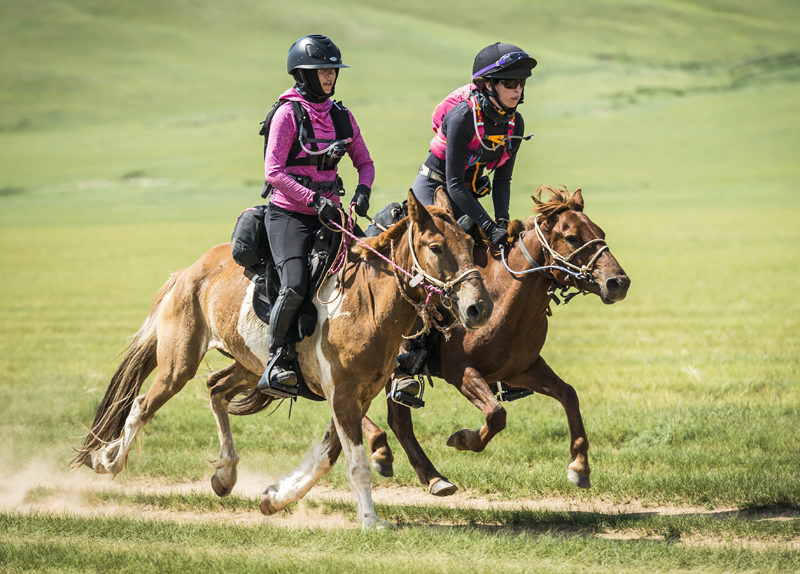
The site is enchanted by the contrast between the whiteness of the moss and the black rock that forms the walls of the canyon. Down the walls to the foot of autumn, you will discover trees and flowers that take advantage of the abundance of water to grow.
Picnic lunch brought by our vehicles, nothing to wear on horses, so we can enjoy many gallops!
After each ride, we choose a quiet and sublime place for dinner and night.
Day – 4 Orkhon River Valley (Tuvkhen Monastery) /4 to 6 hours riding each day/
 After breakfast, we ride another day in the mountains of Khangai.
After breakfast, we ride another day in the mountains of Khangai.
Picnic lunch brought by our vehicles, nothing to wear on horses, so we can enjoy many gallops!
In the afternoon, we go up to the monastery of Tovkhon.
The monastery of Tovkhon dominates the Orkhon valley at 2400 m altitude.
Tuvkhen Monastery: Located on the border of Uvurkhangai and Arhangai, 40 km north-west of Khujirt soum and 50 km north of Bat-Ulziit soum, situated on the hilly peaks of the high mountain of ‘Undur-Ovoot also called Shiveet-Ulaan. The mountains can reach up to 5 kilometers from the monastery. The first chief Lamaisme Bogd Guegueen Zanabazar was born in 1648, when he was 14 years old, interested in the unique natural beauty of this natural beauty, and in 1651 he built a stone house with a stone wall to practice meditation and called it “Dubkhan“. The name changed Tuvkhun.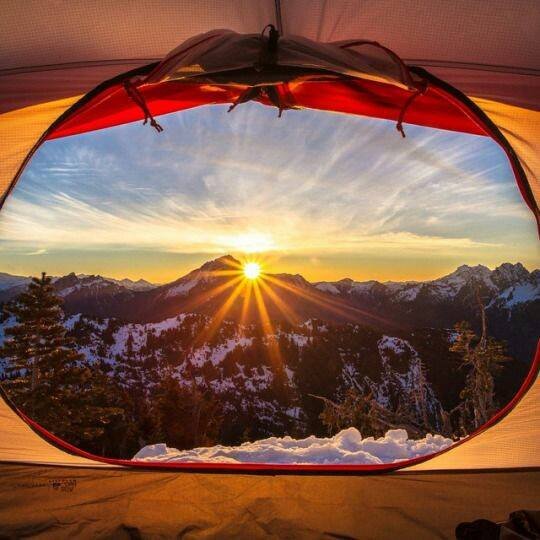
You have to climb up to the monastery, about an hour climb through a beautiful mountain forest. You can visit the temples and caves that are related to beliefs, such as that of a spiritual rebirth after a passage in a very narrow pipe dug into the rock.
The top view extends 360 degrees tens of kilometers beyond the mountain ranges surrounding the Orkhon Valley in long undulating waves, sometimes covered with dark forests, sometimes bordered by green meadows.
Dinner and overnight in bivouac
Day – 5 Orkhon River Valley (The passage of the Dalan) /4 to 6 hours riding each day/
After breakfast, we descend the mountains to the banks of the Orkhon. The views are amazing on the big valley with wooden mountains in the background.
 Picnic lunch brought by our vehicles, nothing to wear on horses, so we can enjoy many gallops!
Picnic lunch brought by our vehicles, nothing to wear on horses, so we can enjoy many gallops!
We visit the Ulaan Tsutgalan Falls on the road and arrive at the Dalan Pass.
Dinner and overnight bivouac
Day – 6 Orkhon River Valley (Baga Khushigt) /4 to 6 hours riding each day/
After breakfast, we continue our riding in the upstream part of the valley where the landscape becomes more and more wild.
This volcanic region has ancient black lava flows that contrast with the white running water of the Orkhon River.
Picnic lunch brought by our vehicles, nothing to wear on horses, so we can enjoy many gallops!
On horseback, we reach the forest with the impressive mountains.
Dinner and overnight bivouac
Day – 7 Orkhon River Valley to Naiman Nuur /4 to 6 hours riding each day/
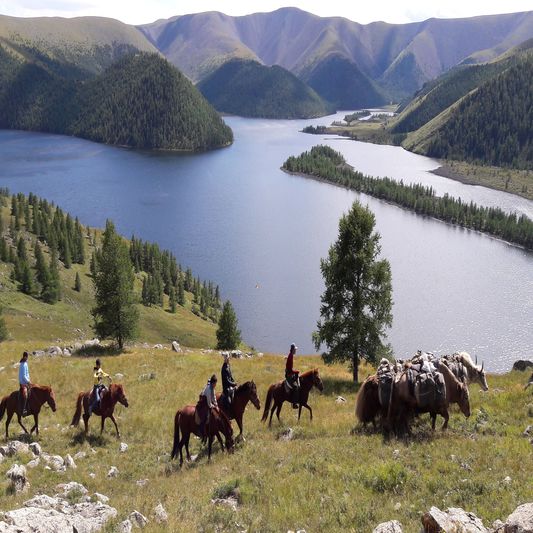 For the next 3 days, the ride will have a totally different rhythm: after the great outdoors, we now ride in very wild and remote landscapes: the Naiman Nuur Natural Park, which means “the Park of 8 Lakes“.
For the next 3 days, the ride will have a totally different rhythm: after the great outdoors, we now ride in very wild and remote landscapes: the Naiman Nuur Natural Park, which means “the Park of 8 Lakes“.
Yaks carried the equipment and your personal suitcases during these three days because this beautiful isolated region is not accessible to vehicles.
We pack the luggage and camping gear on the yaks and start our steep climb to the mountains.
Picnic lunch en route.
After the ride, we set up camp on the shore of Lake Khuis (the smallest of the eight) for dinner and overnight.
We will stay 2 nights on this campsite, to avoid having to ride with loaded yaks the next day, and therefore enjoy a faster equestrian rhythm.
Day – 8 Park the Naiman Nuur (visits the lakes) /4 to 6 hours riding each day/
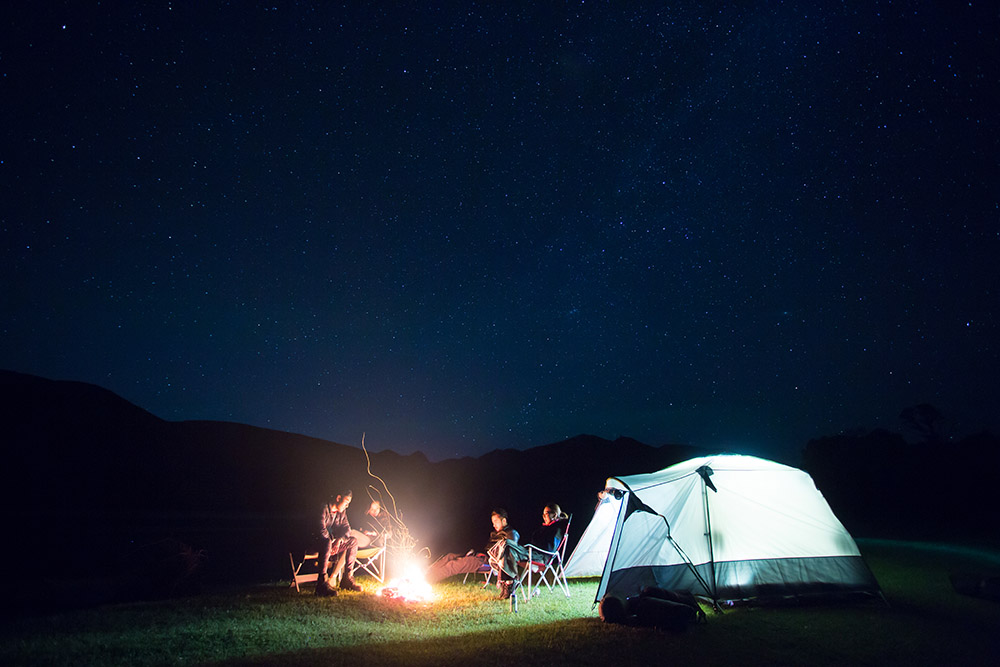 Today we ride in beautiful steppes and wooded mountains, discovering the beautiful scenic lakes of the park.
Today we ride in beautiful steppes and wooded mountains, discovering the beautiful scenic lakes of the park.
The largest lake is Shireet, it is 2800 meters above sea level with fresh water. We picnic here and we can swim in this lake.
Dinner and overnight on the same campsite.
Day – 9 Park the Naiman Nuur to Buurug /4 to 6 hours riding each day/
Today, we leave Naiman Nuur Park with our pack yaks to return to the Orkhon Valley.
We ride through rugged mountains and enjoy our safe horses and the ability of our yak guides!
We find our vehicles and set up our camp on the banks of the Boorog River.
Dinner and overnight bivouac.
Day – 10 Buurug to Khyatruun Hot Spa /4 to 6 hours riding each day/
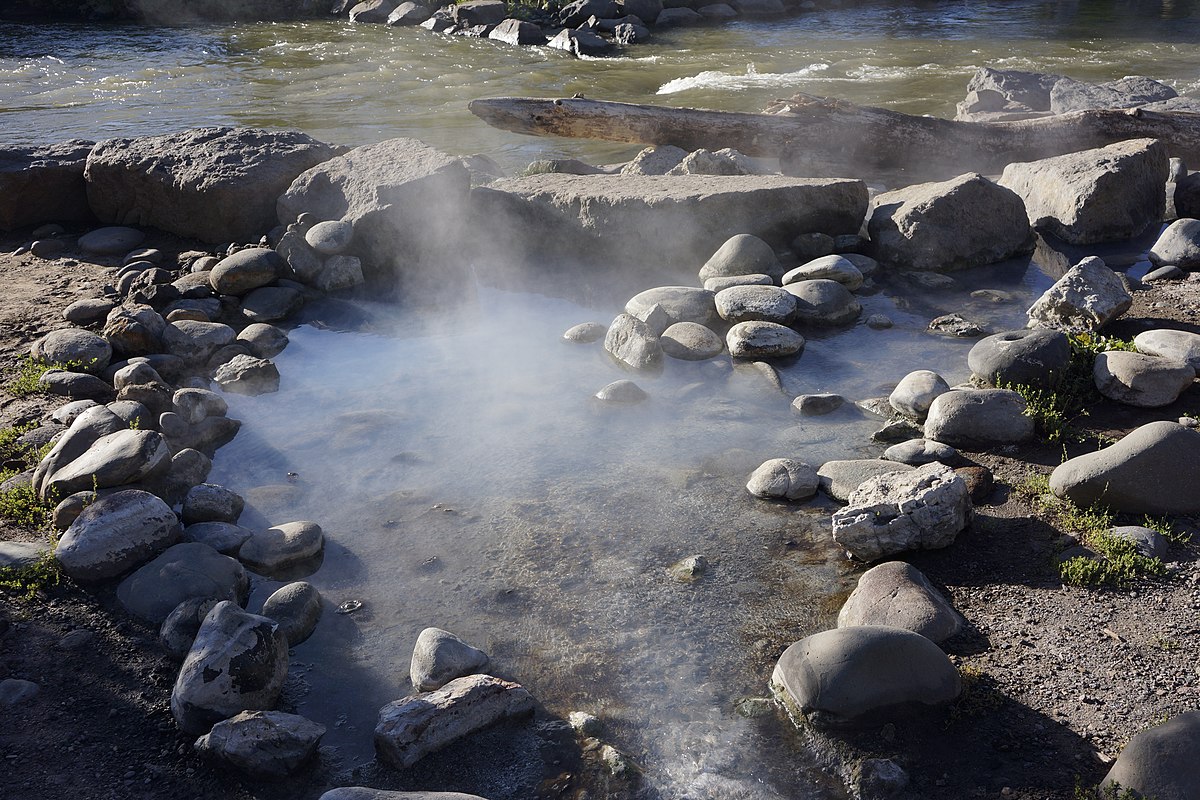 After breakfast; we ride to discover the hot spring of Khyatruun
After breakfast; we ride to discover the hot spring of Khyatruun
This spa is located in Bat-Ulzii soum of Uvurkhangai province. It is surrounded by light pebbles and light rocks. The hot and cold springs are good for all people, not just the organ but also the eyes and allergies. In this spa, which was used for from 174years, in 1727 philosopher Damchaadorj created 21 tara meditation. Also, the first Prime Minister of Mongolia, Sain Noyon Khan, T.Namnansuren and his queen using the jade stone, flat rock seat and ridge
Picnic on the roadside
Dinner and night bivouac
Day – 11 Khyatruun Hot Spa to Khyatruun River (nomadic family) /4 to 6 hours riding each day/
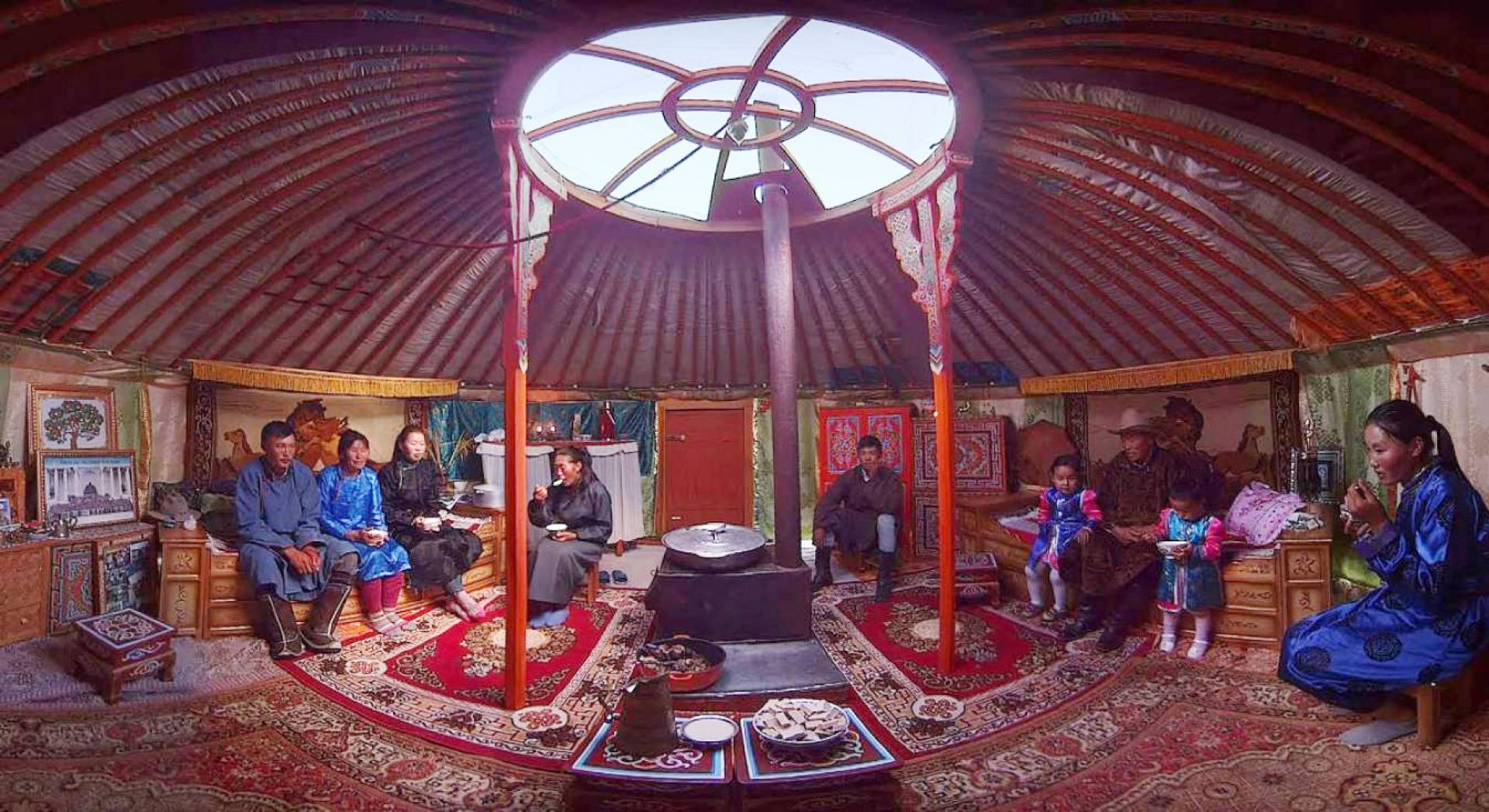 After the breakfast; let’s go for the discovery of the nomadic way of life!
After the breakfast; let’s go for the discovery of the nomadic way of life!
The day is devoted to the discovery of the traditional way of life of the nomads of Mongolia.
Each camp of yurts is home to a family whose daily life is punctuated by the care of herds: dairy mares, sheep, goats and dris (females yacks), caring for sick or weak animals, moving animals to new pastures …
The women also take care of the children, they cook, prepare various dairy products (butter, cheese, fermented mare’s milk, drinking milk …) and maintain the interior of the yurt.
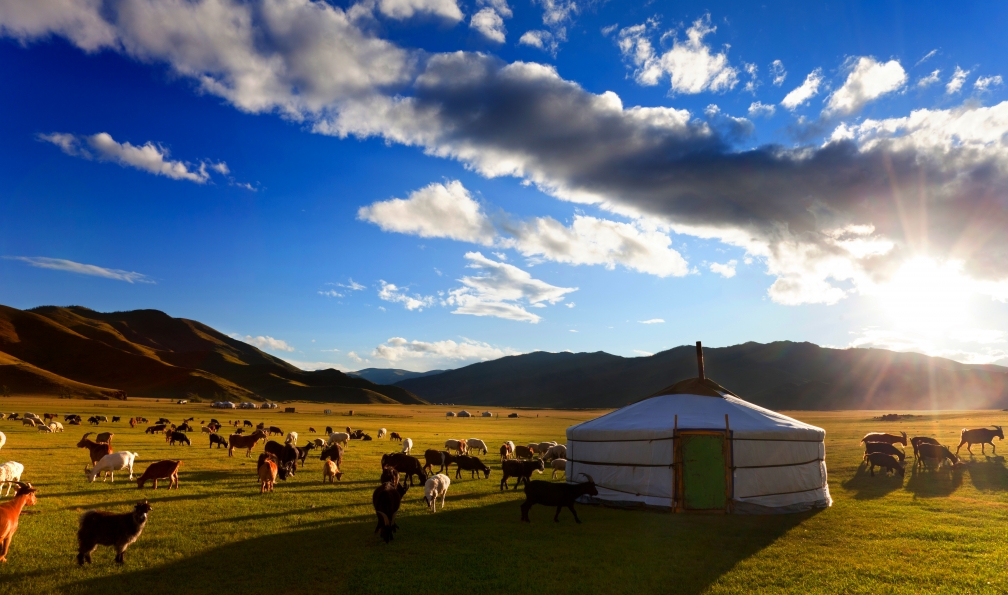 The men take care of the animals, the maintenance of the equipment and the harnessed horses.
The men take care of the animals, the maintenance of the equipment and the harnessed horses.
We can participate in these activities and get to know the different members of the family.
During the day, we can still spend some time in the saddle, helping them gather the herds, or just take a tour to explore the area.
In the evening, our hosts will prepare a traditional specialty, the Khorkhog, the “Mongol Barbecue“.
Khorkhog is a traditional nomadic specialty of the Mongolian steppe. You will almost never find it in a restaurant.
To prepare the Khorkhog, the nomads cut the sheep or goat into pieces, keeping the bones. Fifteen stones the size of a fist are heated in the fire.
When they are hot enough, they are layered with the meat in a metal container, which is often a can of milk.
Other ingredients are added on stones and meat, potatoes, carrots, cabbage, seasoning …
Sufficient water is added so that all the ingredients are cooked by both the steam and the heat of the stones. The container is closed and placed on the fire for an hour to an hour and a half.
When the container is opened, the Khorkhog is ready to eat.
The family removes the meat and vegetables, as well as the stones that have become black, both because of the fire and the fat they have absorbed.
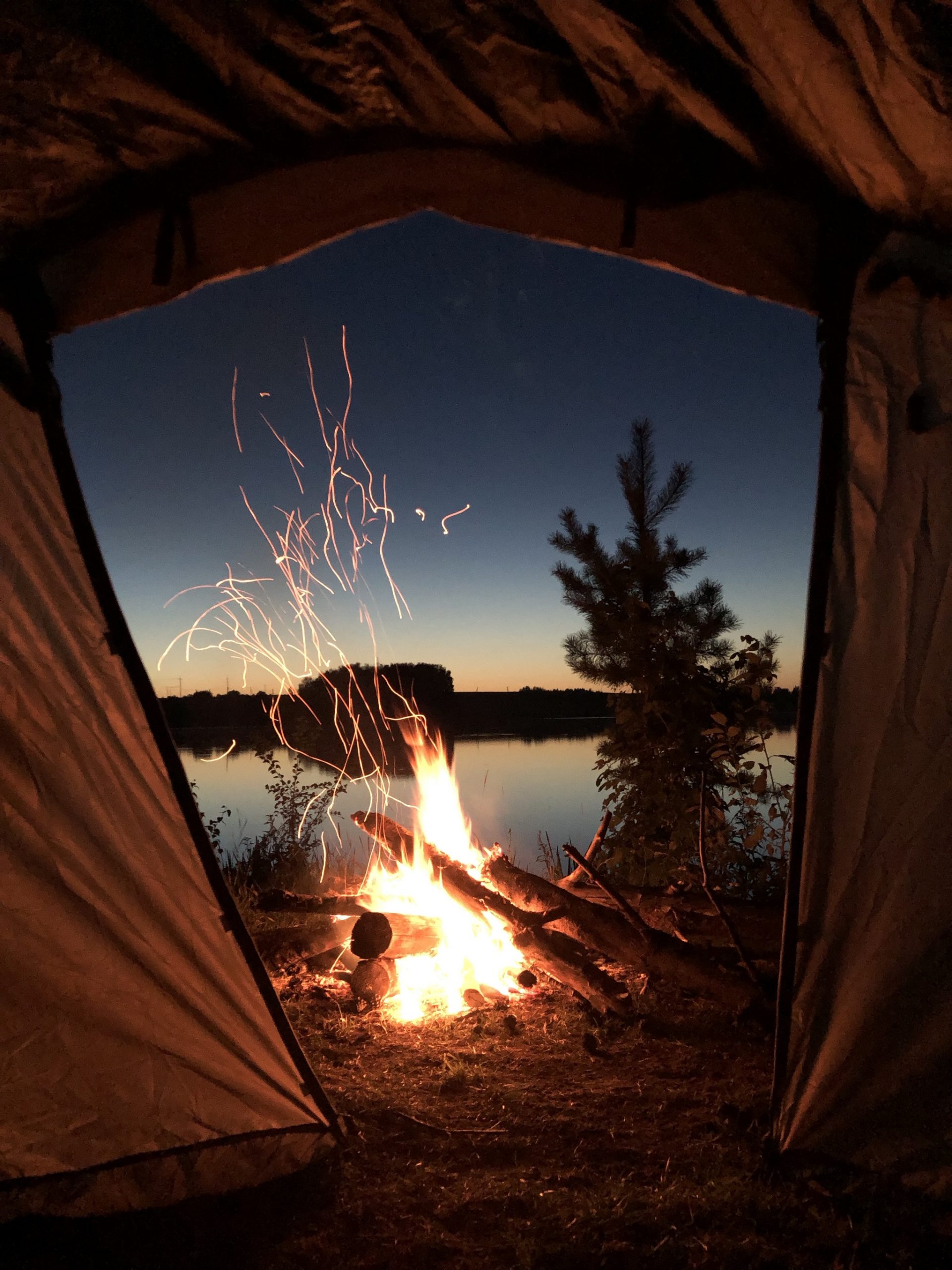 These stones are still hot and the guests keep them in their hands because the Mongols consider them to be beneficial for health.
These stones are still hot and the guests keep them in their hands because the Mongols consider them to be beneficial for health.
We usually eat the Khorkhog with the fingers, using a knife to cut the meat.
This night, we will sleep in a “yurt of hosts” close to the yurts of our nomadic family.
The comfort is simpler and you will discover the real nomadic way of life …
Day – 12 Khyatruun River (nomadic family) to Khustai National Park
At the end of this beautiful trip, we go to Khustai National Park. For riders is an honor to see the wild horses of Prjewalski from near.
Khustai Mountains: Pursuant to Mongolia has stated internationally to conserve up to 30 percent of its territory specifically in supporting its biodiversity conservation, today there are 102 state protected areas established with 28 million ha area equal to 14.86% of total territory. One of them is Khustai National Park. Implementing the Przewalski’s horse reintroduction program was the fundamental reason for establishing Khustai National Park. Initially established for the first reintroduction of the Przewalski’s Horse the park covers more than 50,000 hectares. After the scientific programs being run out of the reserve since 1992 achieved measureable success and provided valuable conservation outputs Khustai was upgraded to a National Park in 1998
The Przewalski: Equus ferus przewalski Groves, 1986 (PH) is considered to be the last and only remaining wild horse species in the world. However, it was extinct in the wild by 1969 and was reintroduced back into the wild in Mongolia, China and Kazakhstan in the 1990s. The species could survive in captivity after 53 foals from the Mongolian Gobi region were successfully shipped to European countries. However, only 12 of them produced foals. Reintroduction started only in 1992 by the import of 16 Przewalski´s horses from the Netherlands to Khustain nuruu in Mongolia in association with the Foundation for the Preservation and Protection of the Przewalski Horse and the Mongolian Association for Conservation of Nature and Environment. During 1992-2000 at five times 84 wild horses from European countries were reintroduced in Khustai National Park. At present 335 individuals of Przewalski’s horses exist in Khustai with 34 breeding harems and more than 80 bachelors compete for the mares. It is the highest number of Przewalski’s horse in the World.
Lunch at the roadside
Dinner and night at the camp of yurts (2 to 4 people per yurt, with single beds, showers in a separate building).
Day – 13 Khustai National Park to Ulan Bator
 Breakfast and drive to Ulan Bator.
Breakfast and drive to Ulan Bator.
Lunch on roadside.
Afternoon is dedicated to shopping in stores downtown, or at the Narantuul “black market” where you will find traditional clothing and objects of daily life.
Visit a cashmere factory.
In the late afternoon, you will attend a show with traditional dances, music and songs from Mongolia, especially the amazing Khoomei.
The Khoomei is an overtone singing (throat singing) in which the singer produces two distinctively audible pitches at the same time, including a low pedal note, or drone, derived from the fundamental frequency of the vocal cord vibrations, and higher melodic notes that result when the singer’s mouth acts as a filter, selecting one note at a time from among the drone’s natural overtone series pitches.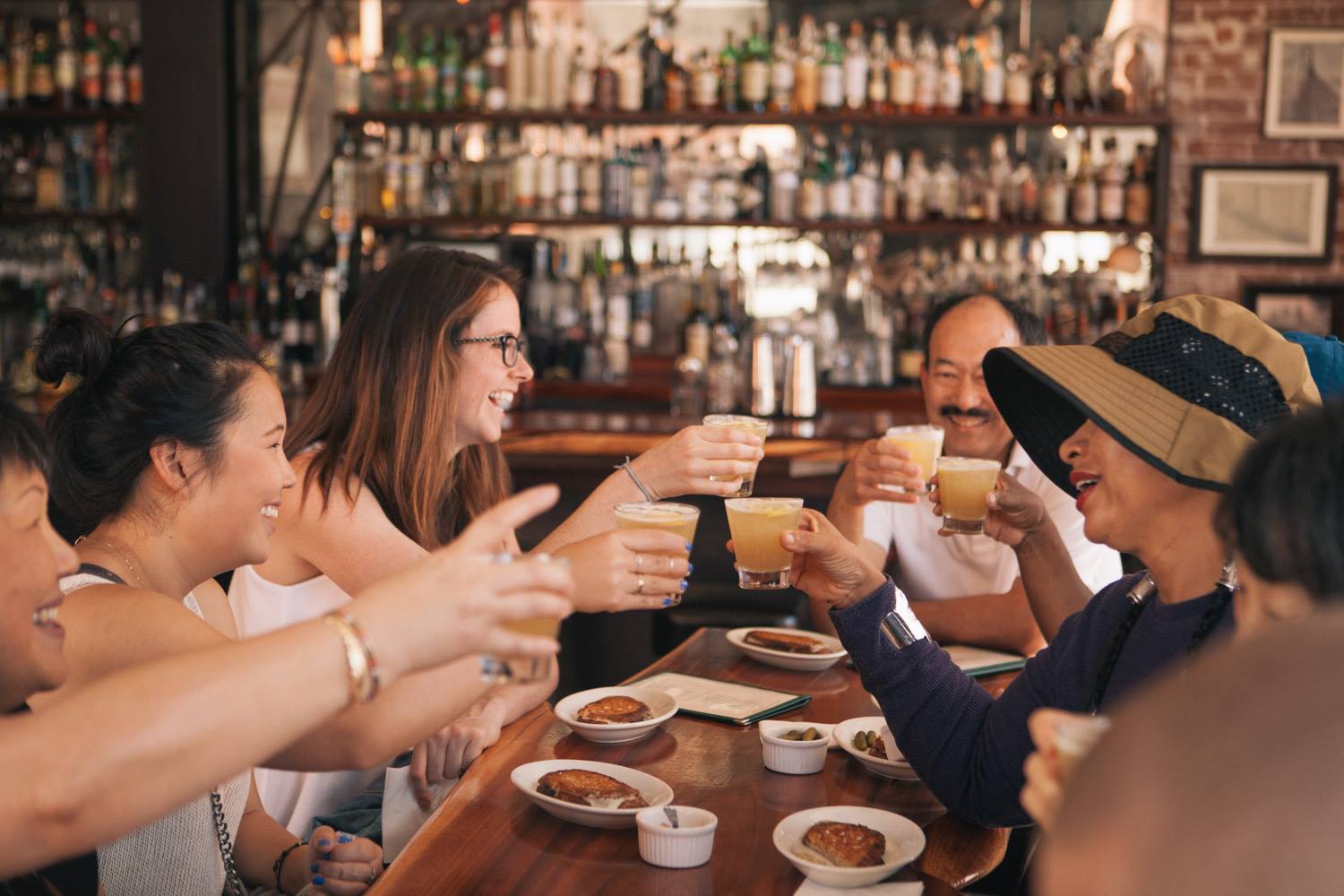
The sound is reminiscent of the Jew’s harp.
This type of song is recorded in Intangible Cultural Heritage of Humanity by UNESCO in 2010.
Dinner downtown and overnight at a 3* hotel (local standard) in the center of Ulan Bator.
Day – 14: Return Home
Breakfast (depending on your flight schedule) and transfer to airport for your flight back home.
